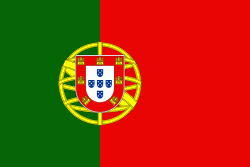Faro (Faro)
 |
 |
The Ria Formosa lagoon attracted humans from the Palaeolithic age until the end of prehistory. The first settlements date from the fourth century BC, during the period of Phoenician colonization of the western Mediterranean. At the time, the area was known as Ossonoba, and was the most important urban centre of southern Portugal and commercial port for agricultural products, fish, and minerals.
Between the second and eighth centuries, the city was under the domain of the Romans, then the Byzantines, and later Visigoths, before being conquered by the Arabic-speaking Muslims known as Moors in 713. From the third century onwards and during the Visigothic period, it was the site of an Episcopal see, the Ancient Diocese of Ossonoba (306-688). The Byzantine presence has endured in the city walls' towers that were built during the Byzantine period.
With the advent of Moorish rule in the eighth century, Ossonoba retained its status as the most important town in the southwest corner of the Iberian Peninsula. In the 9th century, after a revolt led by Yahia Ben Bakr who was succeeded in office by his son, Bakr Ben Yahia, it became the capital of a short-lived princedom and was fortified with a ring of defensive walls. At this time, in the 10th century, the name Santa Maria began to be used instead of Ossonoba. By the 11th century, the town was known as Santa Maria Ibn Harun.
During the Second Crusade soon after the Anglo-Norman forces took Lisbon in 1147 a detachment of this group sacked Faro, which was still by then under Muslim rule, on their way to the Holy Land. Again in 1217, during the Fifth Crusade, a Frisian fleet of crusaders on their way to Acre, sacked and burned the city.
During the 500 years of Moorish rule, some Jewish residents of Faro made written copies of the Old Testament. The Moors were defeated and expelled in 1249 by the forces of the Portuguese King Afonso III. With the decline of the importance of the city of Silves (which was made the regional bishopric as Diocese of Silves shortly during and properly after the Reconquista), Faro took over the role of administration of the Algarve area.
Map - Faro (Faro)
Map
Country - Portugal
 |
 |
| Flag of Portugal | |
One of the oldest countries in Europe, its territory has been continuously settled, invaded and fought over since prehistoric times. The territory was first inhabited by pre-Roman and Celtic peoples who had contact with Phoenicians, ancient Greeks and Carthaginians. It was later ruled by the Romans, followed by the invasions of Germanic peoples and the Islamic invasion by the Moors, whose rule was eventually expelled during the Reconquista. Founded first as a county of the Kingdom of León in 868, gained its independence as the Kingdom of Portugal with the Treaty of Zamora in 1143.
Currency / Language
| ISO | Currency | Symbol | Significant figures |
|---|---|---|---|
| EUR | Euro | € | 2 |
| ISO | Language |
|---|---|
| PT | Portuguese language |















